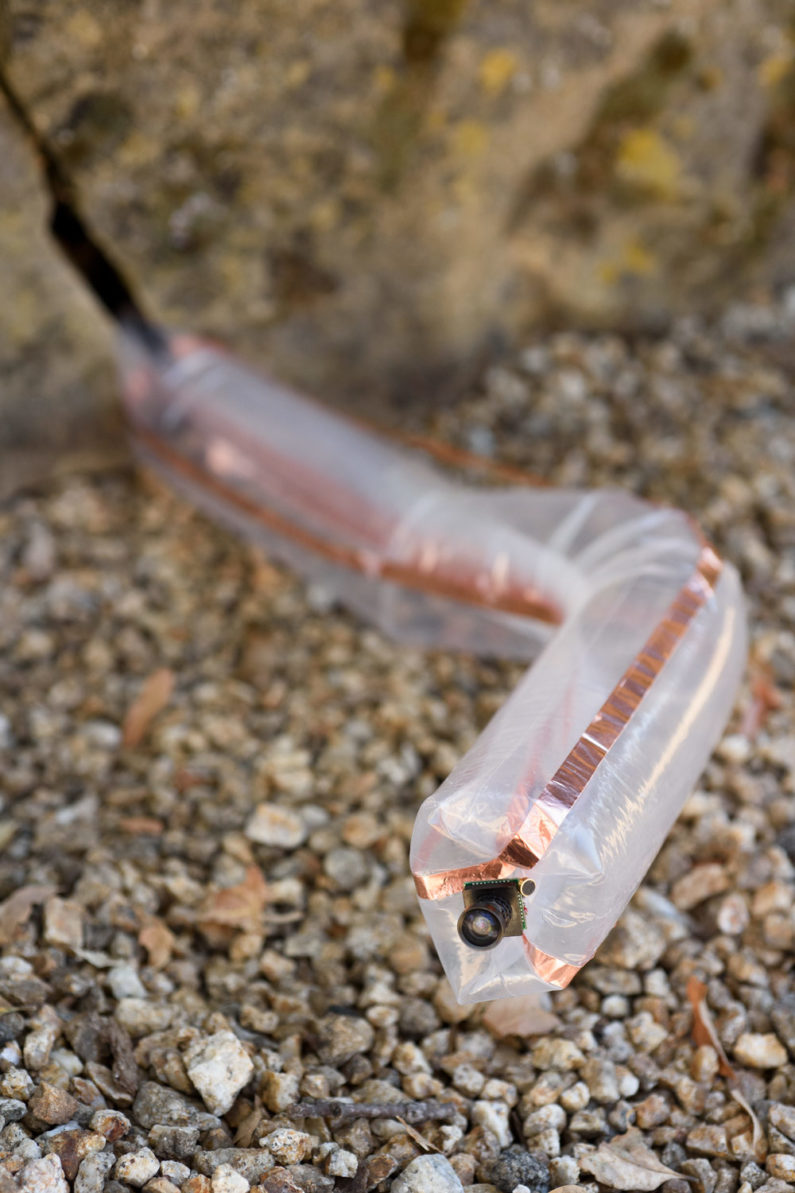Imagine rescuers searching for people in the rubble of a collapsed building. Instead of digging through the debris by hand or having dogs sniff for signs of life, they bring out a small, air-tight cylinder. They place the device at the entrance of the debris and flip a switch. From one end of the cylinder, a tendril extends into the mass of stones and dirt, like a fast-climbing vine. A camera at the tip of the tendril gives rescuers a view of the otherwise unreachable places beneath the rubble.
This is just one possible application of a new type of robot created by mechanical engineers at Stanford University, detailed in a June 19 Science Robotics paper. Inspired by natural organisms that cover distance by growing – such as vines, fungi and nerve cells – the researchers have made a proof of concept of their soft, growing robot and have run it through some challenging tests.
“Essentially, we’re trying to understand the fundamentals of this new approach to getting mobility or movement out of a mechanism,” explained Allison Okamura, professor of mechanical engineering and senior author of the paper. “It’s very, very different from the way that animals or people get around the world.”
To investigate what their robot can do, the group created prototypes that move through various obstacles, travel toward a designated goal, and grow into a free-standing structure. This robot could serve a wide range of purposes, particularly in the realms of search and rescue and medical devices, the researchers said.
A growing robot
The basic idea behind this robot is straightforward. It’s a tube of soft material folded inside itself, like an inside-out sock, that grows in one direction when the material at the front of the tube everts, as the tube becomes right-side-out. In the prototypes, the material was a thin, cheap plastic and the robot body everted when the scientists pumped pressurized air into the stationary end. In other versions, fluid could replace the pressurized air.
What makes this robot design extremely useful is that the design results in movement of the tip without movement of the body.
“The body lengthens as the material extends from the end but the rest of the body doesn’t move,” explained Elliot Hawkes, a visiting assistant professor from the University of California, Santa Barbara and lead author of the paper. “The body can be stuck to the environment or jammed between rocks, but that doesn’t stop the robot because the tip can continue to progress as new material is added to the end.”
The group tested the benefits of this method for getting the robot from one place to another in several ways. It grew through an obstacle course, where it traveled over flypaper, sticky glue and nails and up an ice wall to deliver a sensor, which could potentially sense carbon dioxide produced by trapped survivors. It successfully completed this course even though it was punctured by the nails because the area that was punctured didn’t continue to move and, as a result, self-sealed by staying on top of the nail.
In other demonstrations, the robot lifted a 100-kilogram crate, grew under a door gap that was 10 percent of its diameter and spiraled on itself to form a free-standing structure that then sent out a radio signal. The robot also maneuvered through the space above a dropped ceiling, which showed how it was able to navigate unknown obstacles as a robot like this might have to do in walls, under roads or inside pipes. Further, it pulled a cable through its body while growing above the dropped ceiling, offering a new method for routing wires in tight spaces.
